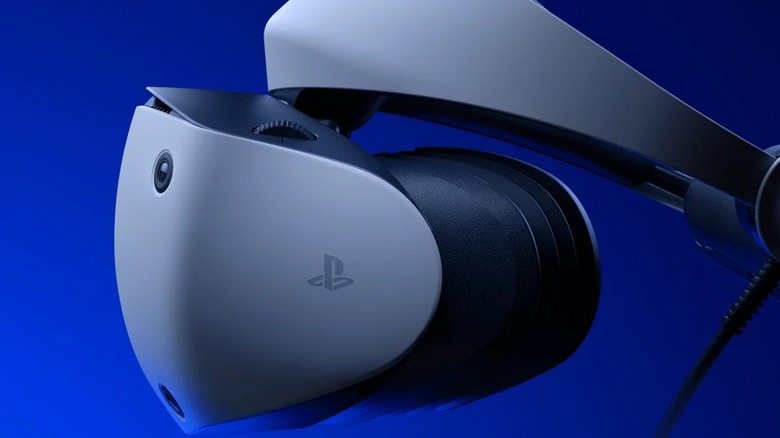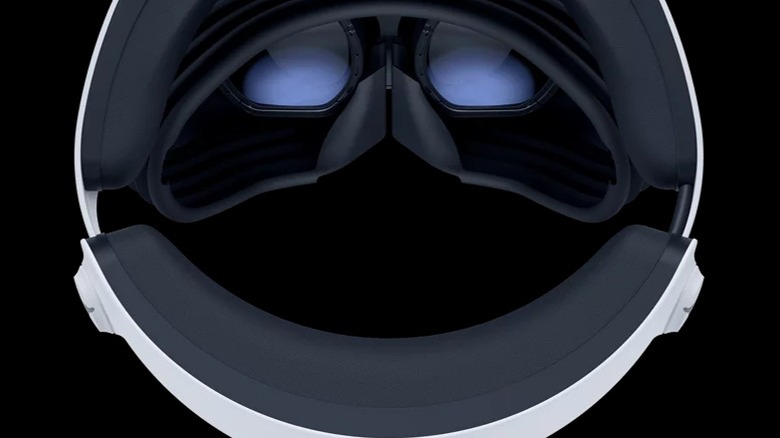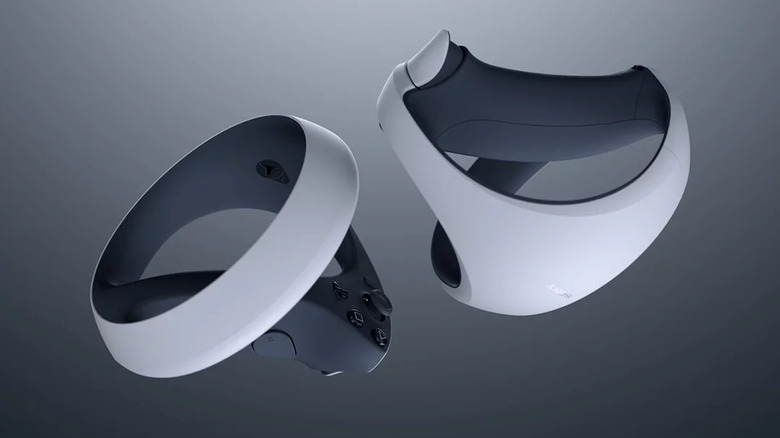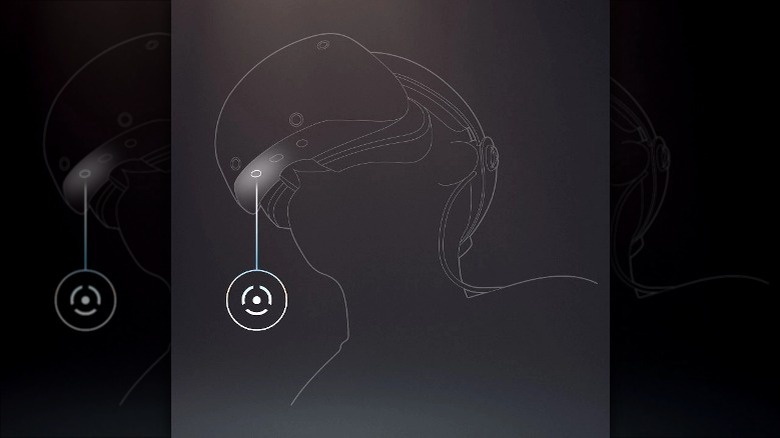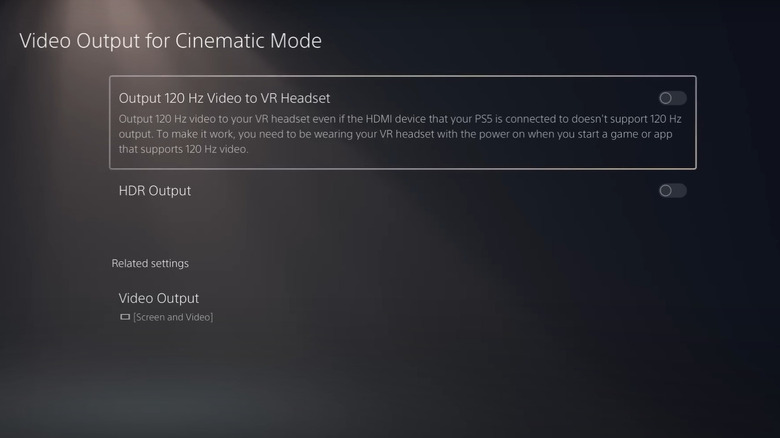Things You Never Knew Your PSVR 2 Could Do
In early 2021, Jim Ryan of PlayStation told GQ that the company had set its sights on "a completely new VR format for PS5." This iteration would benefit from "a considerable amount of lessons learned" through PSVR. The transition to a "single-cord setup" served as the first of many improvements Sony highlighted, with looks at a number of other innovations dropping in the two years that followed.
Designed using several of the same pillars as the PlayStation 5, PSVR 2 and its Sense controllers also take advantage of features like adaptive triggers, haptic feedback, and 3D audio. Sony assembled these details to help players "Feel a New Real" in titles like "Horizon: Call of the Mountain" and "The Dark Pictures: Switchback VR." Ultimately, critics felt PSVR 2 delivers on its objectives, though they still questioned the long-term potential of the format. Does the system offer enough to merit the hefty price tag?
The PSVR 2's staying power will likely come down to its library of games and how developers utilize its advanced capabilities. Unfortunately, due to its rather scant launch lineup, players may not even be aware of the system's most promising features.
Eye-tracking and foveated rendering combine for greater immersion and faster performance
Sony invested big in the visual department to ensure PSVR 2 offers the most immersive experience possible. Thanks to cameras on the inside of the headset, the system detects the player's eye movement. Developers have taken advantage of this feature in various ways, such as foes that move when you blink and vision-based menu interactions.
Additional applications will likely emerge in the years to come. Eye-tracking has the potential to have a strong impact on narrative-based titles that emphasize choices and more nuanced encounters with NPCs. Imagine characters who respond to your body language, such as how long you maintain eye contact during a conversation.
To further keep users rooted in a scene, the eye-tracking technology uses foveated rendering to sharpen the point where they direct their focus. At the same time, it reduces the resolution of other areas, allowing for a boost in performance. How much of a boost? According to a 2022 GDC Unity panel about creating titles for PlayStation VR2, foveated rendering on its own makes GPU frame time as much as 2.5x faster. When combined with eye-tracking, this number can jump up to 3.6x faster.
Finger touch detection works with other features to mimic actual hand movement
The PSVR 2 Sense controllers serve as a major upgrade over the first generation's Move models. Beyond the adaptive triggers and haptic feedback, the controllers boast a third element that ups the immersion factor: finger touch detection. Instead of relying solely on pressing buttons for player input, the Sense can detect your fingers in key areas (trigger button, grip button, action button, and stick). "Five finger touch detection sensors are installed on each of the controllers," explained Takeshi Igarashi, a member of the Peripheral Design team. "This allows for natural gesture control during gameplay."
In case you didn't know: The PSVR2 sense controllers offer finger-touch detection.
Just resting your fingers will be captured, it's a super cool feature! #PSVR2 pic.twitter.com/a3XrflMC2Y
— Mitsuownes (@Mitsuownes) February 27, 2023
While not supported by all games, players can see the finger touch detection in action in the PSVR 2's flagship launch title "Horizon: Call of the Mountain." It works in tandem with the Sense's orb-like shape and infrared light-based tracking system to capture and reflect the player's hand movements within the game environment. This makes actions such as running your fingers through water, pointing, and other small gestures possible.
See-through view and customizable function button
Thanks to the PSVR 2's see-through view, users don't have to remove their headsets to interact with their physical surroundings. Switching into this mode activates cameras on the front of the headset, which projects the player's surroundings into their field of view. Sony made sure to point out that these cameras don't come with the option to record, but they will simplify tasks like locating the Sense controllers or grabbing a refreshment.
Users can activate the see-through view via the control center's quick settings card or by pressing the function button on the underside of the headset. If you don't get that much use out of the see-through view or play a lot of multiplayer titles in which communication is key, you may prefer to use the function button to quickly mute your microphone instead. You can make the switch by heading to Settings > Accessories > PlayStation VR2 > VR headset > Function Button Assignment and selecting "Mute Microphone."
120Hz cinematic mode
Players can use PSVR 2 to view non-VR titles and other media via cinematic mode. While in this mode, users can do things like access the quick settings, change the screen size, and lock the audio position. One of the biggest perks of the setup is the ability to enjoy 120Hz video right in your headset; however, this doesn't come enabled by default. In fact, many users won't even have the option to enable it through the standard method provided by PlayStation support right out of the box.
To get 120Hz cinematic mode up and running, users will first need to power down PSVR 2 and head to Settings > Video Output > and switch 120 Hz Output to "Off." With that taken care of, they can power up the headset and navigate to Settings > Accessories > PlayStation VR2 > Cinematic mode. At this point, they should have the option to toggle on "Output 120 Hz Video to VR Headset." While there, they might want to toggle on "HDR Output" as well for the best cinematic mode viewing experience.

